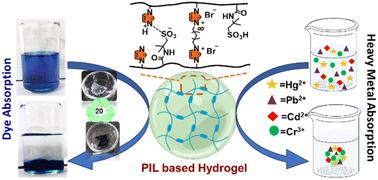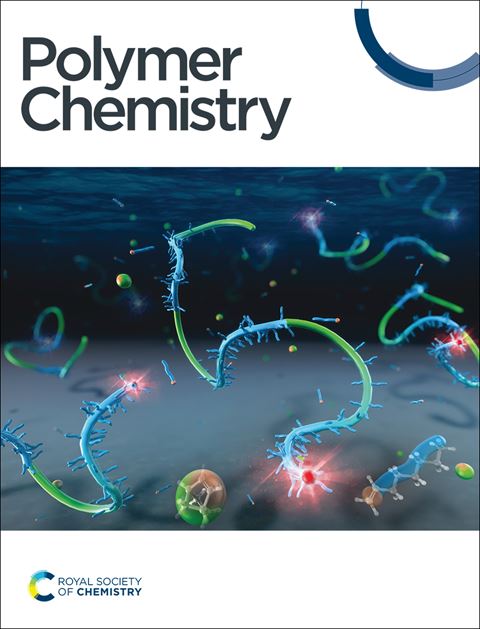同时去除重金属和合成染料的多面聚(离子液体)基高吸水性凝胶
IF 3.9
2区 化学
Q2 POLYMER SCIENCE
引用次数: 0
摘要
水污染仍然是一个严重的全球问题,迅速的工业发展、农业径流和未经处理的城市排放大大加剧了水污染。为了应对这一环境挑战,我们开发了一种基于聚(离子液体)的水凝胶,作为多功能和可持续的平台,可以同时去除废水中的重金属和有机染料(阳离子和阴离子)。以2-丙烯酰胺-2-甲基-1-丙磺酸和乙烯基咪唑为单体,采用一锅聚合-凝胶法制备了水凝胶。咪唑部分与1,10-二溴十烷季铵化有利于交联和离子网络的形成。所制得的水凝胶,交联密度为10%,具有显著的膨胀容量(2570%),表明其具有高吸水性。在流变分析中,观察到所有水凝胶的主要弹性行为具有连贯的固体性质。FE-SEM研究显示了层状互连结构,在互连区域具有孔隙,表明有很好的吸收潜力。探讨了水凝胶对致癌重金属(铅、汞、镉、铬)和有机染料的去除效果。由于阳离子和阴离子聚合物链的存在,这些基于pil的水凝胶被发现在去除水介质中的阳离子和阴离子染料方面非常有效。水凝胶对重金属和染料的吸附能力分别为250 mg/g和490 mg/g。水凝胶的可回收性和可重复使用性使其成为去除水体中致癌物质的可持续材料。本文章由计算机程序翻译,如有差异,请以英文原文为准。

A multifaceted poly(ionic liquid)-based superabsorbent hydrogel for simultaneous removal of heavy metals and synthetic dyes
Water pollution remains a critical global concern, significantly intensified by rapid industrial development, agricultural runoff, and untreated urban discharges. In response to this environmental challenge, we have developed a poly(ionic liquid)-based hydrogel as a multifunctional and sustainable platform for simultaneous removal of heavy metals and organic dyes (both cationic and anionic) from wastewater. The hydrogels are synthesized via a one-pot polymerization–gelation process employing 2-acrylamido-2-methyl-1-propanesulfonic acid and vinyl imidazole as monomers. Quaternization of the imidazole moiety with 1,10-dibromodecane facilitated both crosslinking and ionic network formation. The resulting hydrogel, with 10% crosslinking density, demonstrated remarkable swelling capacity (2570%), indicating its superabsorbent nature. In rheological analysis, a dominant elastic behaviour with a coherent solid nature was observed for all the hydrogels. The FE-SEM study revealed a layered, interconnected structure with porosity in the interconnected region, signifying promising absorption potential. The hydrogels are explored towards the removal of carcinogenic heavy metals (Pb, Hg, Cd, Cr), and organic dyes. Due to the presence of both cationic and anionic polymer chains, these PIL-based hydrogels are found to be very effective in the removal of both cationic and anionic dyes from water medium. The hydrogel showed an absorption capacity of 250 mg g−1 and 490 mg g−1 of heavy metals and dyes, respectively. The recyclability and reusability make these hydrogels a sustainable material for removing carcinogenic materials from water bodies.
求助全文
通过发布文献求助,成功后即可免费获取论文全文。
去求助
来源期刊

Polymer Chemistry
POLYMER SCIENCE-
CiteScore
8.60
自引率
8.70%
发文量
535
审稿时长
1.7 months
期刊介绍:
Polymer Chemistry welcomes submissions in all areas of polymer science that have a strong focus on macromolecular chemistry. Manuscripts may cover a broad range of fields, yet no direct application focus is required.
 求助内容:
求助内容: 应助结果提醒方式:
应助结果提醒方式:


